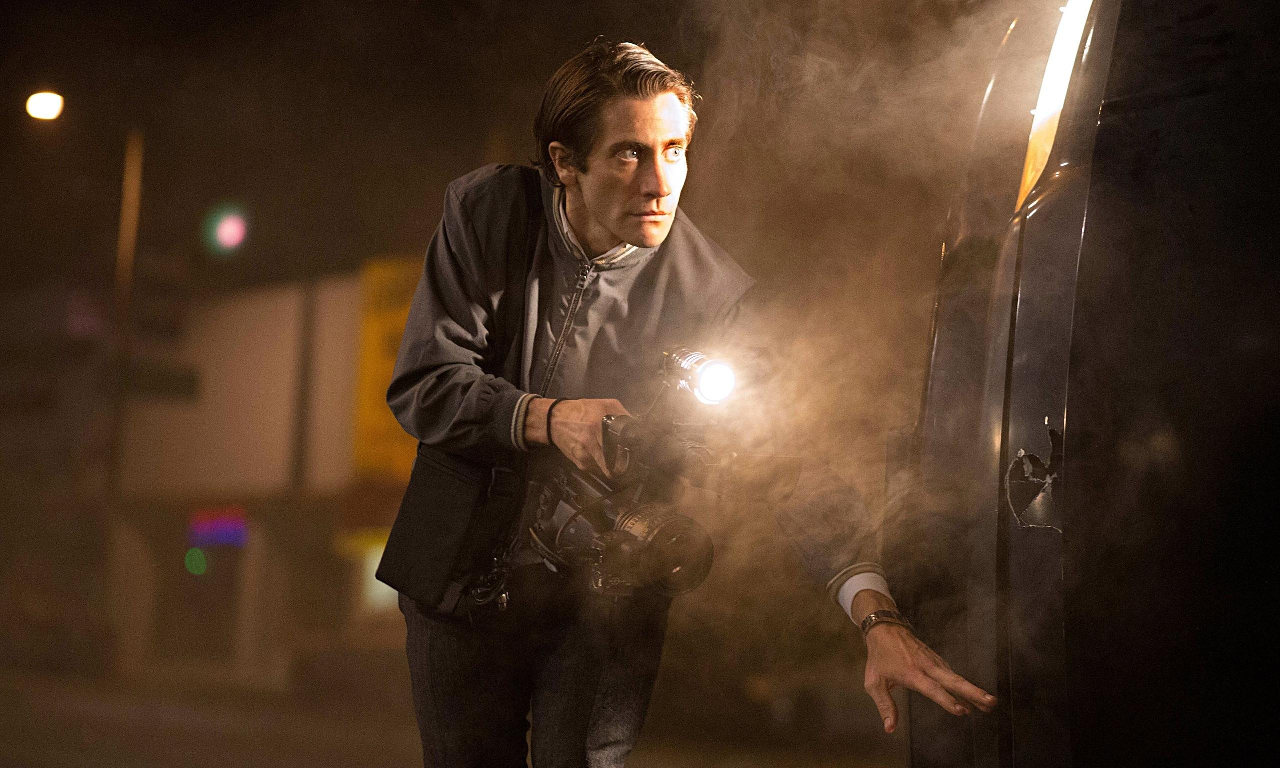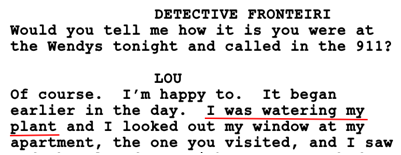
Do you think it’s cool when a villain is the protagonist? Of course it is. Yet it is also a difficult screenwriting task.
Here are some excerpts from Nightcrawler script:

And later on:

And near the end of the movie:

In a great episode of The Q&A with Jeff Goldsmith, screenwriter director Dan Gillroy says that the plant described and mentioned in these excerpts (underlining mine) should have been a dog. In the first draft of the script, to indicate that a sparkle of humanity still existed into sinister protagonist Lou, he had a dog to look after – to make him likable. But Gillroy recalls that the dog started to make Lou too likable and in subsequent drafts, he turned it into a plant, lovingly watered by Lou.
Gillroy goes on emphasizing that creating and maintaining a connection between the main character – a merciless stringer – and the audience was his first writing concern. He wanted to avoid for the audience to think that it was only a movie about a sociopath:
“The fact that he has some level of compassion or desire for this thing to grow, odd enough, I think it serves this purpose. And on a side production note, the plant was supposed to be raggedy and sort of brown at the beginning, and we had this idea that it was to flower toward the end”.
But some problems on the set made this last thing impossible.
What counts most in order to make the viewers root for Lou is, in Gillroy opinion, the fact that the movie tells “a success story” – it is an apologue about how to succeed in a world dominated by capitalism: Lou, who in the beginning is desperate for work, ends up being a boss in the business.
Here is how Gillroy puts it:
“I believe that where that leads you is the awful knowledge at the end, I hope, that the real problem isn’t Lou. And this is again going back to the empathy with the character, I believe the real problem is the society that creates characters like this and rewards characters like this. Because I believe that if you came back in ten years Lou would be running a major multinational corporation. […] I think that approaching the character as a success story took the morality off it and it allowed to see other aspects in the character”.
In effect, everything in the script is conceived so to build a sort of Darwinian, competitive world where only the strong survive. For example, Gillroy observes that every scene in the movie depicts a negotiation. And characters are thought in the same perspective: Rick – Lou’s employee – is a “prey animal” – a “rabbit” Lou will feed on – while Mina – Lou’s costumer – who used to have power, is now a vulnerable woman who needs to survive.
To conclude, the rule is: if you want your antihero to connect with the audience, make sure your writing is at its finest. It is the case of Nightcrawler.

Be First to Comment